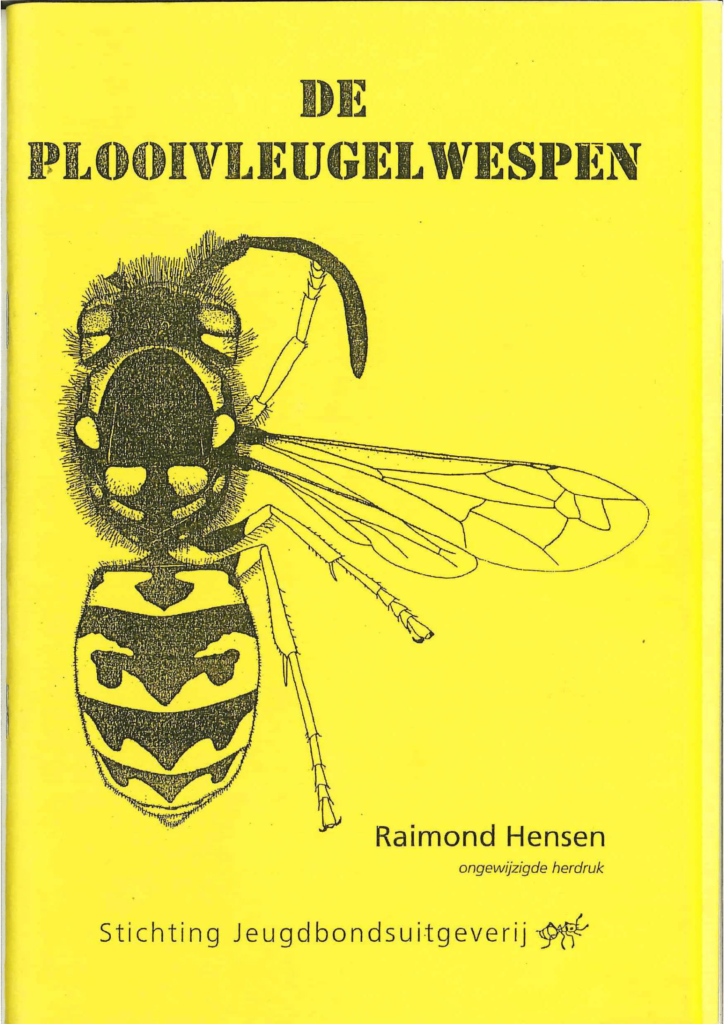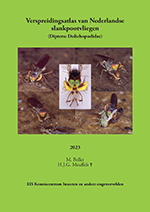397-Openstreetmap, Macrostrat (Details) gives geology,sedimentary, rocks, Lithography and physiography.
https://forum.inaturalist.org/t/add-a-link-to-google-earth-for-altitude-information/37680 Macrostrat is a platform for the aggregation and distribution of geological data relevant to the spatial and temporal distribution of sedimentary, igneous, and metamorphic rocks as well as data extracted from them. It is linked to the DD (formly GeoDeepDive) digital library and machine reading system, and it aims to become a community resource for the addition, editing, and distribution of new stratigraphic, lithological, environmental, and economic data. Interactive applications built upon Macrostrat are designed for educational and research purposes.
If you click on “Details” under the map of an observation, you’ll now see an option to view the observation’s coordinates on Macrostrat, which will tell you the elevation of the location as well as other details such as geology and physiography.
For example, if I go to this observation and click on Details under the map, I’ll see the link:
Which will take me to this page. There’s information on the right-hand side, including elevation, and I can zoom in on the map to see more details like Lithography
Unfortunately Macrostrat doesn’t have all this information for every place on Earth but you should be able to get elevation.
(Originated from this feature request)
Feature requests:
https://forum.inaturalist.org/t/altitude-on-observations/1476/5
https://forum.inaturalist.org/t/filter-by-elevation/5606
https://forum.inaturalist.org/t/add-a-link-to-google-earth-for-altitude-information/37680
Forum discussions:
https://forum.inaturalist.org/t/how-to-determine-the-altitude-of-an-observation/16458 1
https://forum.inaturalist.org/t/an-optimized-workflow-to-determine-the-altitude-of-an-observation/17465
https://www.provincieantwerpen.be/aanbod/dlm/samenwerkingsverbanden/ankona/ankona-ontmoetingsdagen.html
https://www.youtube.com/watch?v=7FgTmaIQeg0&t=24s
https://platformwow.nl/reeksen-archief/climate-adaptation-solutions-from-different-corners-of-the-world
Webinar of the series “Biotic outbreak management of the Genetic Conservation Units Network"
Essentakziekte
on Friday 3 February 2023 11:00-12:00 CET.
PowerPoint iNat Talks
Here is a link to a powerpoint presentation that I made and sometimes modify for presentations about inaturalist: https://drive.google.com/file/d/1bqiz6b1QgJr6wVIA2F906U-5txKsvdSu/view?usp=sharing 29
I have also broken them into others that are visible in this folder: https://drive.google.com/drive/folders/1SIPJ3D6uG3HrHporAyRldC1Y_JwDy37i?usp=sharing 10
If you find any of these documents useful, feel free to share them with anyone who wants to learn about iNat :-)
? De lezingen van vorig jaar zijn nog wel allemaal na te zien, o.a. via youtube. Het verhaal van regenwormenonderzoek was vanmiddag al, dus die heb ik gemist. In deze entoLIV serie komen nog tien lezingen van de Biological Recording Company.
https://www.provincieantwerpen.be/aanbod/dlm/samenwerkingsverbanden/ankona/ankona-ontmoetingsdagen.html
https://www.youtube.com/watch?v=7FgTmaIQeg0&t=24s
https://platformwow.nl/reeksen-archief/climate-adaptation-solutions-from-different-corners-of-the-world
The talk will be recorded so you’ll be able to catch up on YouTube. Subscribe to my YouTube channel to be notified when the recording is uploaded: https://www.youtube.com/channel/UCbeFlKCmJl3h05j4dc9bu1Q
Avian Parasites and the Scientists Who Love Them: An Expedition to Discover the Diversity of Endemic Birds and Parasites in the Amazon
Despite the rich bird life in the eastern Amazon basin, relatively little research has been conducted in the Belém Area of Endemism in northeastern Brazil – one of at least eight regions in Amazonia with unique species found only in each of these respective areas. The Belém area is the most endangered of the eight, largely because of deforestation that has left just 24% of primary forest standing. Jason Weckstein, associate curator of Ornithology at Philadelphia’s Academy of Natural Sciences of Drexel University, will take us on an armchair expedition into this very special location, where he co-led a team conducting research to discover and describe the bird and bird parasite diversity in the region. He’ll share an up-close-and-personal look at everything from daily life in the field to the area’s biodiversity, the endemism patterns in birds and their associated parasites found there, and how the team’s findings are being used to advance our understanding of speciation, disease and parasite ecology, and conservation.
About the Speaker: Jason D. Weckstein, PhD, is Associate Curator of Ornithology at the Academy of Natural Sciences of Drexel University and Associate Professor in Department of Biodiversity, Earth and Environmental Sciences at Drexel University. His research focuses on the biology, biodiversity and evolutionary history of birds and their parasites. He is a fellow of the American Ornithological Society, and has over 20 years of experience working in natural history museums. He has conducted research on birds and their parasites in the United States, Canada, South Africa, Ghana, Malawi, Nicaragua, Brazil, and Mexico.
The value of natural history specimens is continually reaffirmed as we find additional, and previously unimaginable uses for these specimens. Most recently, natural history specimens are being reimagined as archives of microbial communities through time. These microorganisms are preserved in and on the bodies of their hosts and capture how host-parasite and host-pathogen interactions have changed through time.
Using bats and their associated parasites as a case study, Dr. Speer examines how environmental and host factors contribute to microbiome community composition and pathogen prevalence, and how natural history collections capture these interactions. In bats, the skin microbiome appears to vary with environment, while parasites tend to have highly species-specific microbiomes. However, to a lesser extent, habitat fragmentation, time, and geography contribute to variation in the microbiome of parasites.
Additionally, Dr. Speer explores how existing specimens in natural history collections may provide historical context for bat-pathogen and bat-parasite interactions. Studies of host-parasite-microbiome assemblages are necessary to advance our understanding of disease ecology and emergence in wildlife, especially given the wildlife origin of pathogens that impact human health and well-being. Natural history collections are uniquely suited to capture the complexities of wildlife interactions and, using new tools to detect microorganisms from these collections, can inform One Health research in the process.
This event is free and open to all. https://www.eventbrite.co.uk/e/wriggling-into-recording-10-yrs-of-the-national-earthworm-recording-scheme-tickets-236697236807
Leuk recensie van SOVON op ons boekje over vogels in Delft en omgeving 1962-2022, dat onlangs is uitgekomen 🙂 https://sovon.nl/actueel/nieuwsberichten/jubileumboek-de-vogels-van-delft-en-omgeving
Jubileumboek De vogels van Delft en omgeving
23 januari 2023 Nieuwsbrief SOVON (link: https://sovon.nl/actueel/nieuws)
Naar aanleiding van het 60-jarige bestaan publiceerde Vogelwacht Delft e.o. onder redactie van Kees Mostert en Gerard Dumaij eind december een mooi jubileumboek. In de fraai vormgegeven publicatie zijn alle vogelgerelateerde ontwikkelingen binnen het werkgebied de afgelopen 60 jaar weergegeven.
Het boek schetst met behulp van inspirerende anekdotes en bijpassende foto’s een duidelijk beeld over de veranderingen van de afgelopen 60 jaar in het werkgebied van Vogelwacht Delft en omgeving. De speelse manier van schrijven, mede tot stand gekomen door het archief van de Vogelstreken (het kwartaalblad van Vogelwacht Delft en omgeving), maken het erg aantrekkelijk om te lezen. De chronologie vanaf de jaren zestig tot 2020 zorgt ervoor dat de verandering in de loop van de jaren duidelijk is weergegeven.
Het boek onderscheidt zich van andere boeken door de historische veldverhalen over bijvoorbeeld roestende Ransuilen in 1973. Een zwart-witfoto voegt daarbij veel toe aan de leeservaring van het verhaal. Verder is het interessant om de resultaten van watervogeltellingen in de bebouwde kom tussen 1965 en 1971 te lezen, de trends van verschillende broedvogels zoals de Bosuil en Fitis in één oogopslag te kunnen bestuderen en meer te weten te komen over de vogelhotspots binnen het werkgebied. Ook recente waarnemingen worden besproken, zoals de door vogelaars veel bezochte Dwergooruil in de zomer van 2021.
Kees Mostert, één van de auteurs, gaf recent een lezing over het jubileumboek van de vogelwacht; die is hier terug te kijken.
De publicatie kwam mede tot stand dankzij een bijdrage van het Rob Goldbach Publicatie Fonds. https://www.eventbrite.co.uk/e/wriggling-into-recording-10-yrs-of-the-national-earthworm-recording-scheme-tickets-236697236807
https://sovon.nl/actueel/nieuwsberichten/jubileumboek-de-vogels-van-delft-en-omgeving
https://www.youtube.com/watch?v=7vGTNzalrZM
Climate impact and adaptive solutions | Climate Adaptation - An Overview | 22-04-2022
https://www.youtube.com/watch?v=FqQVm7p8_yk
ANKONA2022 Deel 1/4 - ANKONA ontmoetingsdag
Opname van het eerste deel van de ANKONA-ontmoetingsdag 2022. De webinar ging door op zaterdag 12 februari. Geniet hier van de volgende lezingen:
-
0:00 Introductie: Welkom op de feesteditie 25 jaar ANKONA
Dirk Vandenbussche (provincie Antwerpen) -
7:33 COVID19, kunnen mensen andere (zoog)dieren infecteren?
Luc De Bruyn (INBO) -
2:06:06 Vernieuwde lijst provinciaal prioritaire soorten voor provincie Antwerpen
Dirk Maes (INBO) en Dirk Vandenbussche (provincie Antwerpen) -
2:53:03 Camera-opstelling slechtvalkkast Provinciehuis
Mieke Hoogewijs (Provincie Antwerpen) -
ANKONA2022 Deel 2/4 - Themadag Monitoring
Opname van het tweede deel van de ANKONA-ontmoetingsdagen 2022. De webinar ging door op maandag 14 februari met als thema monitoring. Geniet hier van de volgende lezingen:0:00 Opstart vismonitoring
Chris Van Liefferinge (Provincie Antwerpen)
19:27 Monitoring van de Aziatische hoornaar in Vlaanderen
Jasmijn Hillaert (INBO)
31:30 Monitoring van de Aziatische hoornaar in Vlaanderen
Patrick Van Ende (Lokale vrijwilliger in Antwerpen)
Opname van het derde deel van de ANKONA-ontmoetingsdagen 2022. De webinar ging door op dinsdag 15 februari met als thema boommarter. Geniet hier van de volgende lezingen:
-
0:00 Introductie:
Dirk Vandenbussche (provincie Antwerpen) -
2:27 Ecologie boommarter
Michiel Cornelis (Natuurpunt Zoogdierenwerkgroep) -
13:00: Stageverslag 2021, met wildcamera-uitleg en technische aspecten, Den Inslag en omgeving
Jasper Gijsel (stagestudent UA van Michiel Cornelis) -
ANKONA2022 Deel 4/4 - Themadag Verwondering
Opname van het vierde deel van de ANKONA-ontmoetingsdagen 2022. De webinar ging door op woensdag 16 februari met als thema verwondering. Geniet hier van de volgende lezingen:
-
0:00 Afsluiting Feesteditie 25 jaar ANKONA
gedeputeerde Jan De Haes (Provincie Antwerpen) -
6:58 "Diersporen: vinden, verzamelen, nut, waarde en verhalen"
René Nauta (bushcraftexpert en auteur van het boek 'Het Prentenboek' over diersporen van dieren uit Noordwest-Europa) -
1:00:44 Slotwoord
Dirk Vandenbussche (Provincie Antwerpen) -
33:51 Stageverslag 2021, met vergelijking van stage uit boommarterstudie uit 2018, Grenspark Kalmthoutse Heide
Romeo Liekens (stagestudent UA van Rudi Delvaux) -
45:36 Boommarters individueel herkennen en opvolgen
Christoffel Bonte (Natuurpunt) -
1:16:28 Van monitoring naar ontsnipperingsmaatregelen langs de Antitankgracht
Anne Stuer (RL de Voorkempen) -
1:26:10 Stageverslag 2021: Ontsnipperingsmaatregelen langs de Antitankgracht, klaar voor uitvoering.
Ward Van Herck (stagestudent Thomas More bij Anne Stuer)
https://forum.inaturalist.org/t/add-a-link-to-google-earth-for-altitude-information/37680
Wriggling Into Recording: 10 Years of the National Earthworm Recording Scheme
Keiron Derek Brown
02 Feb 2023 13:00 – 14:00
Earthworms are widely-regarded as ecologically important and recognised as ecosystem engineers (i.e. responsible for creating the habitats in which they live). However, they remain hugely under-studied and we have little species-specific information on the 31 species that inhabit the British Isles. The National Earthworm Recording Scheme aims to address this knowledge gap. This free webinar will explore how earthworm researchers are using the 20,000+ earthworm records generated over the last 10 years to improve our understanding of the ecology, behaviour, populations, distributions and habitat associations of different species of earthworm, as well as a current project to assess the provisional conservation status of all British earthworm species.
Check out the live Q&A and further info links for this talk here:
Check out FREE upcoming entoLIVE webinars: https://www.eventbrite.co.uk/cc/entol...
entoLIVE is delivered by the Biological Recording Company and sponsored by the British Entomological & Natural History Society and the Royal Entomological Society.
- Find out more about the British Entomological & Natural History Society: https://www.benhs.org.uk
- Find out more about the Royal Entomological Society: https://www.royensoc.co.uk/
- Check out the Biological Recording Company’s upcoming worm courses and events: https://www.eventbrite.co.uk/cc/worms...


































 Verspreidingsatlas van Nederlandse slankpootvliegen.
Verspreidingsatlas van Nederlandse slankpootvliegen.










